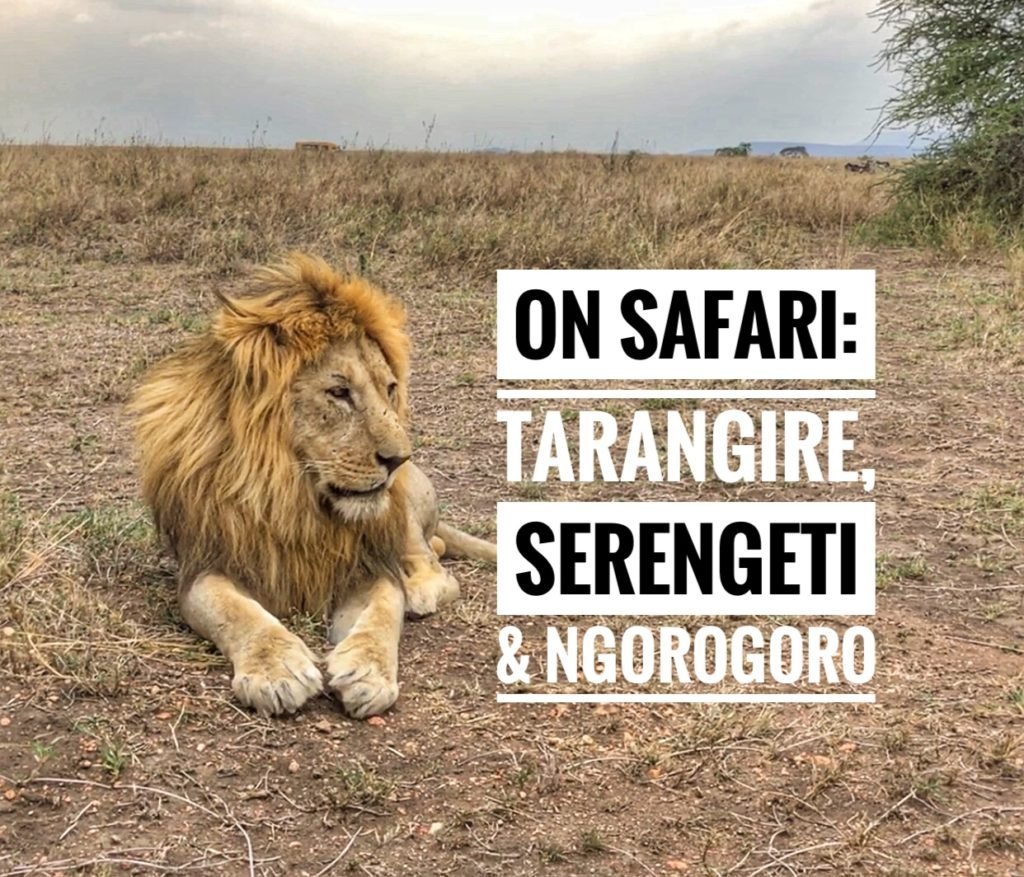
How did we afford a safari on our budget of $50/day? In short, we didn’t. We knew from the beginning of our travels that in Africa, we’d have to loosen our purse strings a little. Despite assumptions however, safaris can be a lot more affordable than people think. In our case budget friendly camping safaris can be planned in advance or on arrival, and can cost around $500 to $800 per person (3 nights/4 days), which includes all park fees (which are very pricey), food, guide and cook, drinks, and camping equipment. The less popular parks in the south of Tanzania are somewhat cheaper. However, since it was our first safari, we wanted to see the cream of the crop… Serengeti, Tarangire and Ngorogoro Crater.
We couldn’t have been happier with our guide, Victor Costa, of Golden Dreams Safari who charges $180/person/day. We fittingly embraced Victor’s nickname, Mr. Big Five, who with a keen eagle eye for spotting anything, and a patient demeanor certainly delivered. Seeing all these animals roaming freely, in their natural habitat, and not behind a barrier in some zoo was truly surreal and mesmerizing.
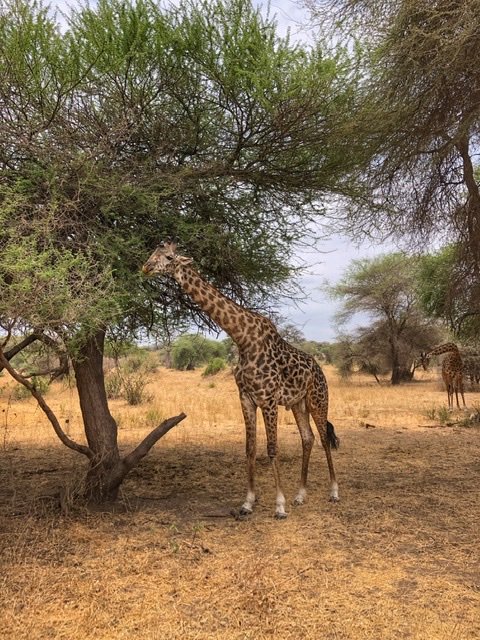

Tarangire National Park
Day one of our safari began with a 9:00 pickup from our hotel in Arusha. In addition to Victor, we were joined by Karin, Roos and Bess, a wonderful mother and two adult daughter trio from the Netherlands. Bess had just finished a four-month nursing program in Malawi and was beginning a nine-month gap year, with sister Roos intact for the beginning of the adventure. Literally within twenty minutes of driving into Tarangire National Park, which surprisingly ended up being our favorite park, we’d already spotted loads of animals, including our first giraffes. With their hypnotic long eyelashes and graceful movements, they are a marvel to look at. Just like a human’s fingerprints, no two giraffe patterns are the same.
A mama and baby giraffe blend in with perfect camouflage. Evidently, giraffes give birth standing up, so the first thing a giraffe baby encounters is a two meter ker-plop on the ground. It doesn’t phase it much, however, because it’s up and walking in the first few minutes. Wow, imagine if human babies had that kind of early independence?!
Walking is one thing, but seeing giraffes run is quite another. Although we only caught a couple moments on video, it was surreal. They looked as if they were gliding along in slow motion.

A troop of vervet monkeys takes a break at the swimming hole. The vervets travel in groups of 10-50 and are gray-furred, black-faced sociable little bundles about the size of a cat. They spend most of their time in the trees where it is safe. Although these monkeys do venture to the ground looking for food and water, like these guys did for us, they rarely go more than 450 meters away from the trees, which are a protection from predators.


This zeal of zebras congregates at a different watering hole. At one point we asked Victor if zebras have ever been trained to be work animals like horses for the Masai indigenous peoples. The answer is surprisingly no. Apparently, although they’re cute as can be, they have very different temperaments to horses. They’re far more aggressive and a lot more dangerous. Zebras have been known to kick each other to death, they will viciously bite any human that comes too close, and there are even many accounts of zebras killing lions.

There were no shortages of African bush elephants at Tarangire National Park. We were just awe-struck at seeing them. Elephants have large, thin ears that contain a complex network of blood vessels that help to regulate body temperature. The average ear of a male African Elephant weighs over 100 pounds.
The amazing thing about Tarangire was being able to experience large groups of different types of animals in the same same setting.
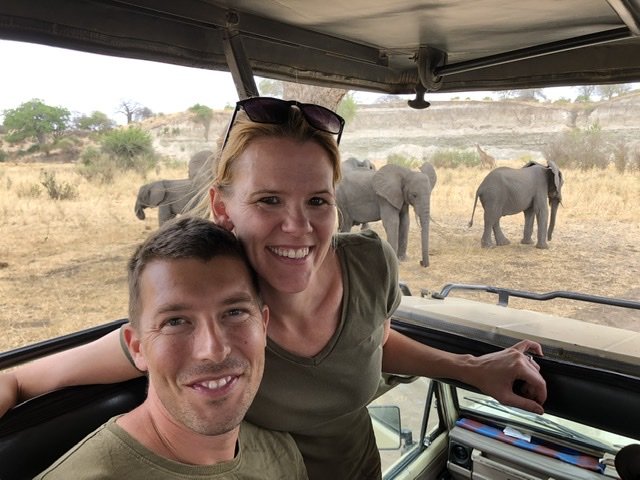
Pausing for the elephants, we could also see giraffes and zebras in the background.
We were so stunned at seeing this parade of elephants move across the savanna, just feet from our safari vehicle. They were all clustered around the calf. Elephant herds apparently are quite sociable as well as matriarchal, with older females rotating turns to take care of the calves and protecting them while traveling from place to place.
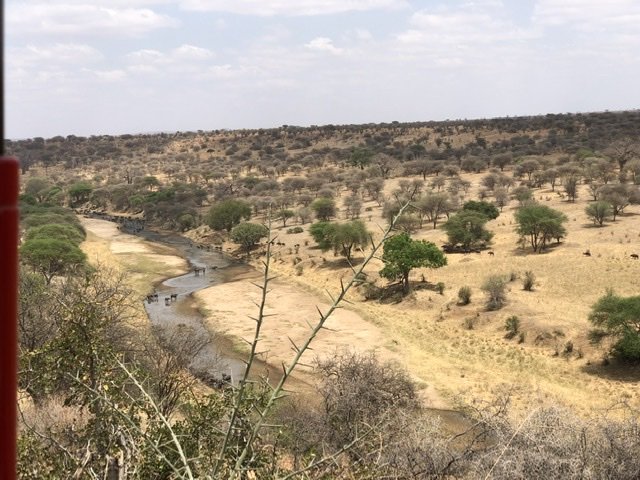
Herds of elephants cross the river in the distance. These storybook expanses made it really seem as if we were in Africa.
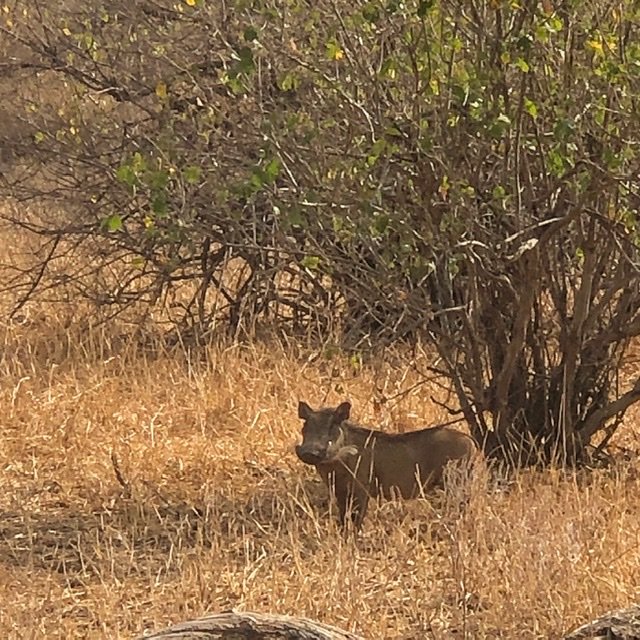
Almost everyone who goes on a safari shouts out “pumbaa” at least once from the vehicle, which was adopted from “The Lion King.” The 1994 animated movie was so successful that it transplanted a fictional name onto one of Africa’s oldest species. Even people from South Africa and Tanzania now call the warthog a pumbaa, even though the Swahili name for warthog is Ngiri. Many other Tanzanians and Kenyans traditionally use “pumbaa” to describe a warthog, which has nothing to do with Disney but the fact that warthogs regularly come into contact with villages and people. They usually cause havoc, scampering through a garden or village and making a mess of everything. Pumbaa, in Swahili, actually means careless, foolish, ignorant, lazy, and stupid. Hence, the name. Despite these stereotypes, pumbaas are incredibly crafty and have been known to outwit an entire pride of lions. (africafreak.com)
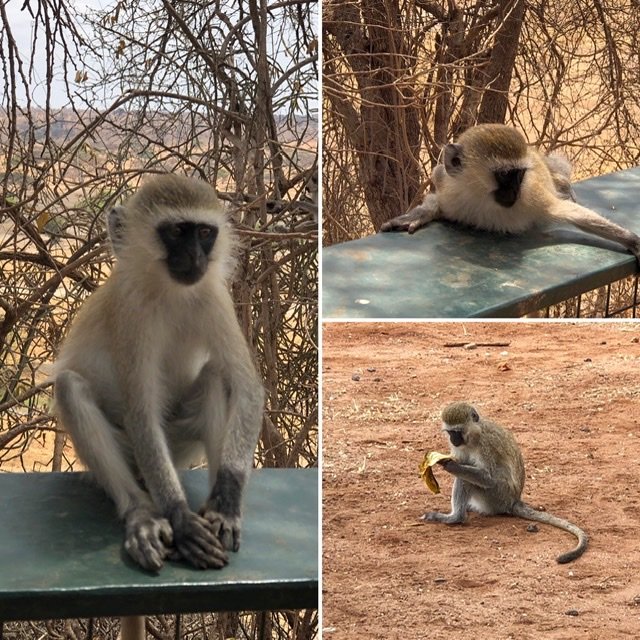
Speaking of crafty, these little vervet monkeys were no exception on our lunch break. We were given a box lunch and warned to keep the box closed, and try not to let the monkeys see us eating. Despite our efforts, one clever little rascal managed to grab Roos’s banana from her lunch box and fled victoriously across the field.
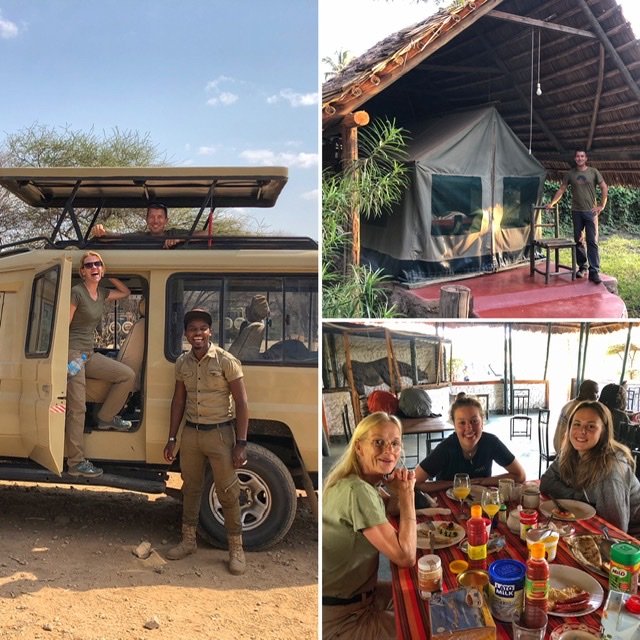
Day one ended with an unexpected surprise…staying at an established canvas tent resort with a real bed, and an en-suite bathroom.
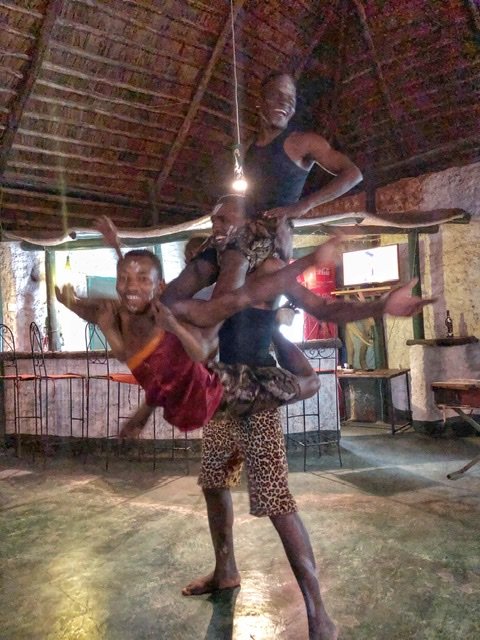
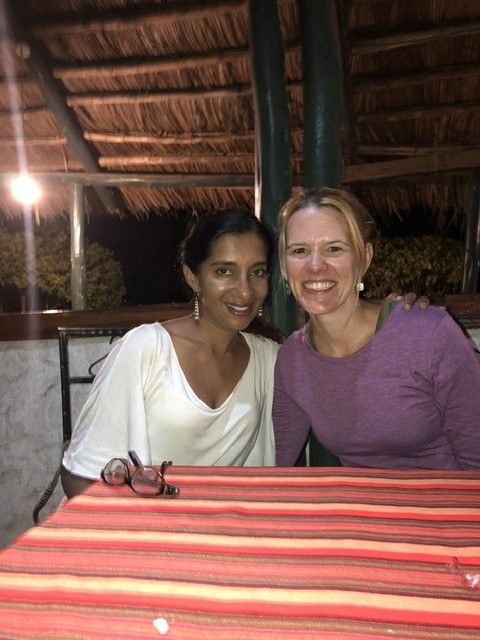
During a delicious fish dinner, complete with a beer, we even had an acrobatic Swahili dance performance and Mandy ended up meeting a fellow camper who crazily happened to be from her hometown. What an action-packed, fun-filled day…

Serengeti National Park
Ah, the Serengeti. Arguably Africa’s most famous national park established in 1951 is a vast ecosystem covering 12,000 square miles and appropriately named “endless plains.” It hosts the largest mammal migration in the world and a endless variety of animals including the leopard, lion, hippo, ostrich, giraffe, wild buffalo, wildebeast, zebra, elephants, baboons,hyena, rhino and cheetah. Thanks to the patience and keen eye of our guide, we managed to see all of these.
The entrance to Serengeti National Park. One thing we really respect about the parks in Tanzania is the safari vehicles are not allowed to go off road to approach the animals. Apparently this is quite different in neighboring Kenya where you can drive anywhere at anytime, which is really not the best for conservation efforts.
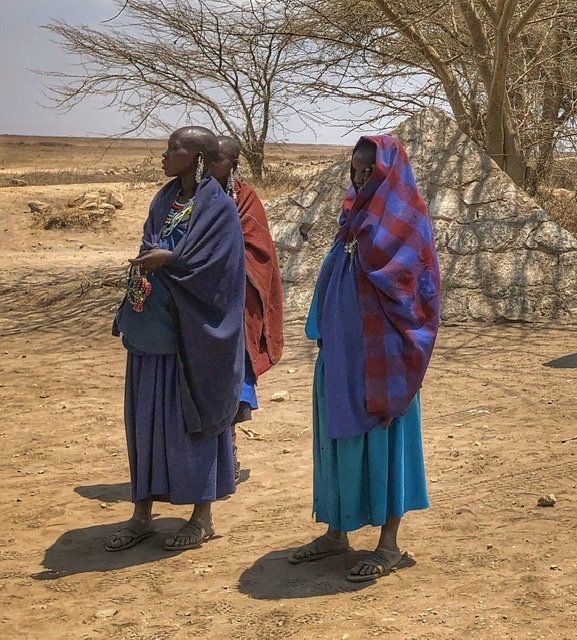
It’s impossible to drive across the vast open plains of Northern Tanzania without witnessing the indigenous nomadic Masai peoples. Roaming the landscape with their characteristic multi-colored robes and wraps, shaven heads, and walking staffs. The Masai seemed perpetually walking, walking, walking. A few facts we learned about the Masai:
- The Maasai are semi-nomadic which is a result of their raising cattle and the need to find new grazing land.
- The men predominantly roam the countryside, walking many miles in a day driving their herds to new grazing grounds.
- The women stay at home with the kids, cooking, constructing temporary residences, and generally tending to the home.
- The Masai are completely community focused… as in, everything belongs to the tribe. This includes the women who get traded into the community as early as seven years old.
- Their main diet consists of raw blood drawn from the cow’s neck mixed with milk. Allegedly it doesn’t hurt the cow and is “delicious.” We’ll pass on that cultural cuisine experience.
- Most done a piece of clothing called Shúkà – a combination of red, blue, and green checked and striped cloths. A large number also have bald or very short l-haired heads.
- They are fearless. Until recently, a Maasai boy would only be crowned a warrior if they killed a lion single handedly using a spear. Fortunately in order to preserve wildlife this has changed.

This was an absolutely surreal opportunity of witnessing four cheetahs on a hunt, followed by a National Geographic pose on top of a perfectly placed mound.
Cheetahs are the fastest mammals on earth sprinting at speeds of up to 112 km/hour (70 mph.) They are predominantly ground animals and are typically found prowling the plains for prey as we witnessed.
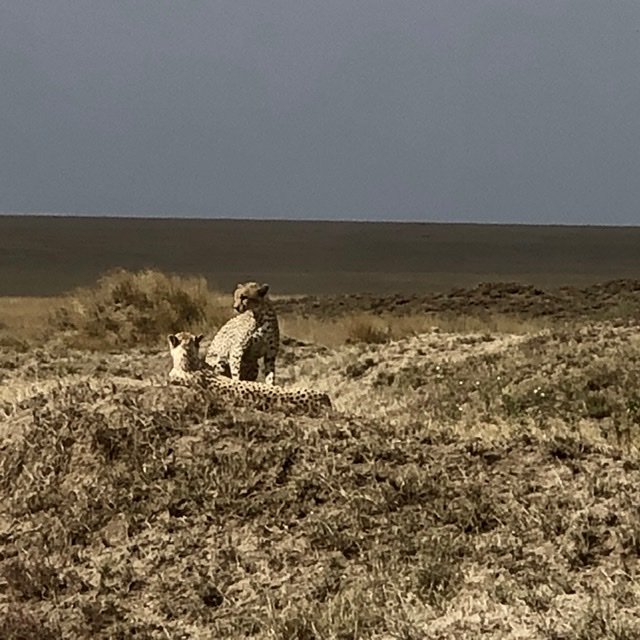
On the contrary, the sometimes confused leopards are typically found in trees and lazily wait for their food to come to them. The prey will roam under the trees for shade and the leopard will pounce, demolish its snack, and climb back up to its perch for a nap. We did see three leopards, but thanks to the distance and the trees, we did not get a good picture. The first time on our trip we really longed for a telephoto camera.
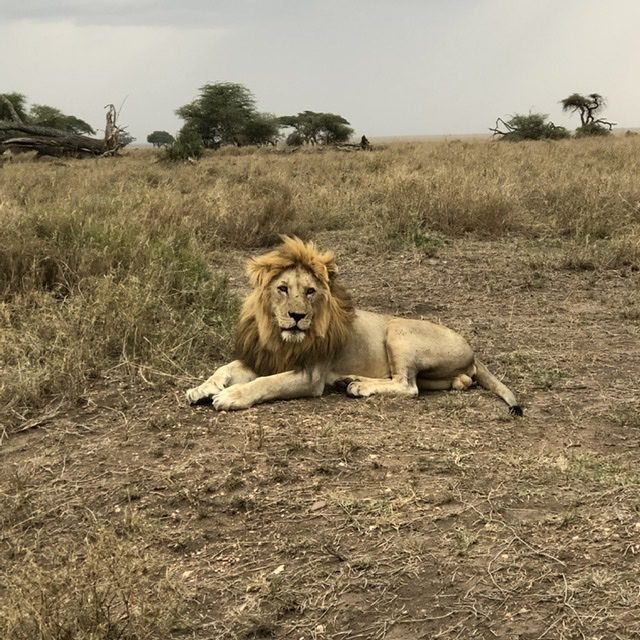
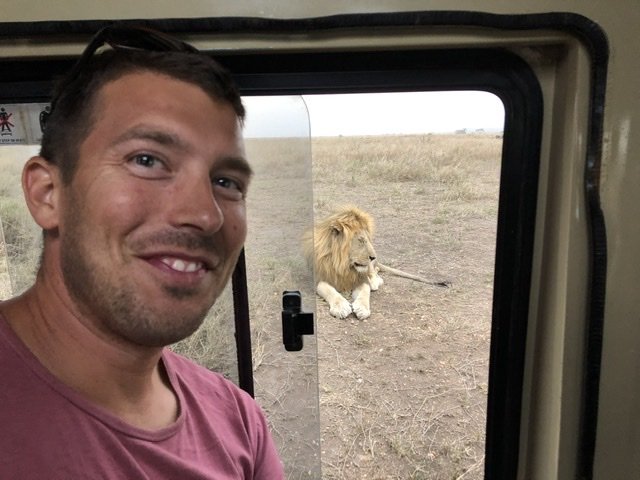
On multiple occasions, we were beyond fortunate to witness a male lion right off the road going about his business. He was literally about 10 feet from our vehicle, but didn’t seem bothered by us in the slightest.

Like we discovered with humans in Tanzania, the lionesses seem to do the majority of the work and hunting. In fact, a pride of them can take down an animal as large as a male giraffe. In the meantime, the swaggering “king of the jungle” typically just looks pretty, sleeps, fights amongst themselves (usually over a piece of lioness), and eats what the females catch. Perhaps the king title is earned because clearly he is catered to hand and foot. (P.s. “king of the jungle” is a ludicrous misnomer because in fact, lions don’t live in jungles.)

Any 80’s music connoisseur understands that “Kilimanjaro rises like Olympus above the Serengeti.” In reality, Toto lied. There is no feasible way that Kilimanjaro can be seen from Serengeti. So, we made our own picture.

Couldn’t believe the electric hues of this little guy.
Stopping for a typical fantastic boxed lunch pre-prepared by our safari chef, we enjoyed poking fun of the tourists who donned ridiculous safari gear.

At lunch, we also enjoyed observing the blue starling and giggled hysterically when a group of at least six Chinese tourists gathered around the bird with their telephoto lenses. God help us if we were in that safari vehicle.

For dessert, these were quite a mystery to us when we bought them from a sweet lady at the Zanzibar ferry. All she told Mandy with a smile is that they were “fruit.” What she didn’t mention, naturally, is that they were dye-dipped sugar-loaded Baobob seeds in their most unnatural state. Yes, Baobob. The pudgy-trunked tree with a branch-topped Afro found all over this part of Africa. We had no clue how to eat them so Mandy asked the local Tanzanian Facebook group. We were instructed to suck on the sugar and spit out the seed, otherwise you’d end up with Baobob branches growing out of your orfices. This leaves a Blow Pop-colored residue painted all over your tongue.

Another notable tree you are guaranteed to see on safari is the Acacia, which is often referred to as the umbrella tree.
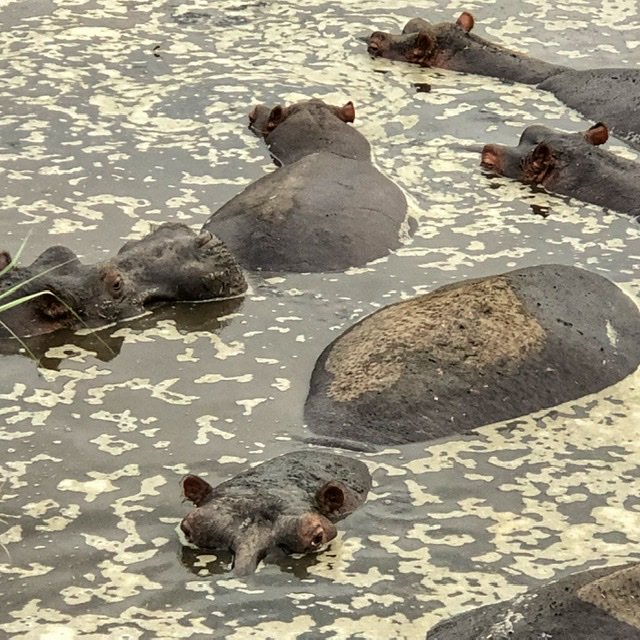
And no trip to Serengeti is complete with a trip to the hippo pool, where they spend most of their lives, only needing to come up for air every five minutes.
However, we were thrilled to see one of them scampering through the bush on its minuscule peg legs and plunge into the murky waters. Weighing up to 3000 pounds (1400 kilos), they’re the third largest land mammal (after elephant and rhino) they are hilarious to see running. Video courtesy of Roos Burghard, our safari mate.
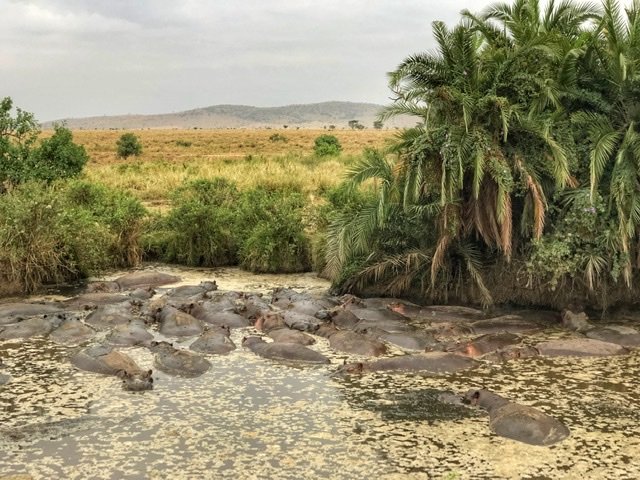
After a lifetime of seeing one or two hippos barricaded in a tiny zoo pool, we loved seeing this pile of what appeared to be at least a hundred hippos rolling like inflated sausages in their natural environment. Don’t get too close though! Hippos are the world’s deadliest large land mammal and kill approximately 500 humans per year!
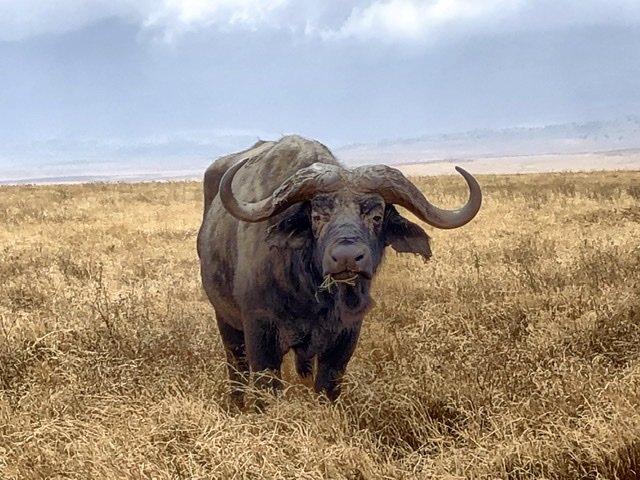
The most aggressive of the Big Five animals is the Wild Cape Buffalo who with a toss of its horns or a stomp of its hooves have killed thousands of hunters throughout time, as well as lions. And apparently, they aren’t very forgiving either. They have been known to attack people that have harmed them even years after the event took place! To be clear, the Big Five aren’t named so because of their size. It’s because they are the five most dangerous animals to hunt in Africa. (Lion, leopard, elephant, wild buffalo and rhino.)

The scariest animal to Mandy, however, was the fighting… ostrich. ? She’s had a fear of big birds since childhood and this safari tested her limits.
Arriving to our camp. Unlike our night of “luxury” the night before, it was a true safari camp in the bush. With this, came many words of “friendly” warnings about what to do if we come face to face with a lion, elephant, hyena, wild buffalo, etc in the campsite. So, as you can imagine it was not a blissful night’s sleep as we listened to the distant howls of hyenas, random chomping of nearby grass, or chirping of hyraxes. Not to mention, the 100-foot walk to the bathroom featuring a field blanketed with glowing eyes, which we later found out were “just (the highly aggressive) wild buffalo.” (Highlighted with the green arrows near the campground)

A massive tree is sprinkled with hooting baboons greeting the next morning‘s light.
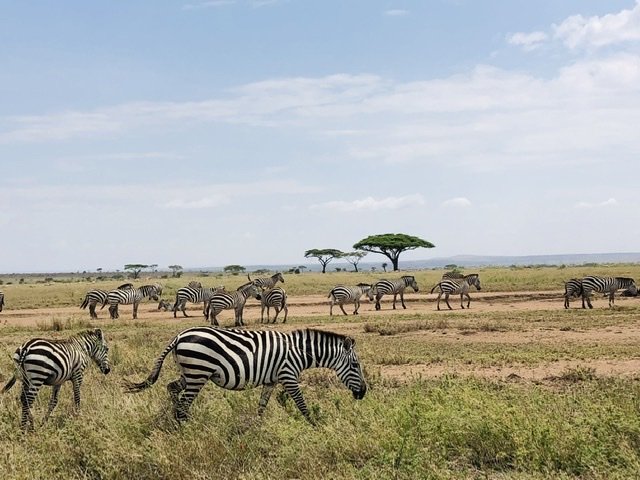
Zebras grazing in the Serengeti.
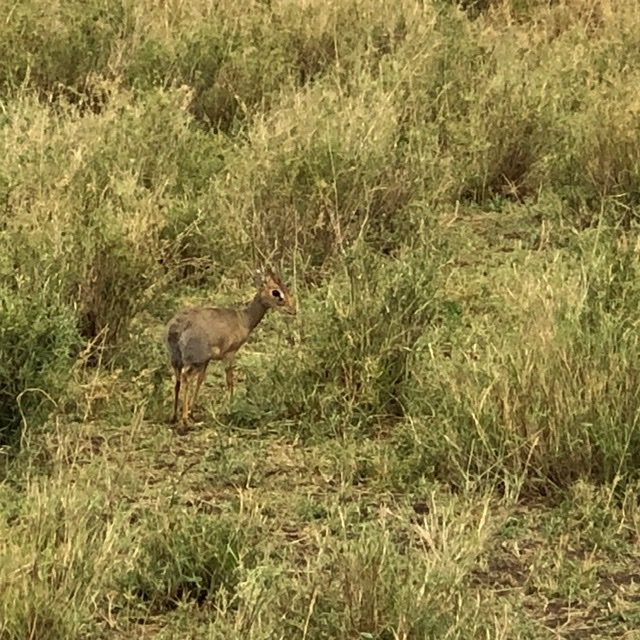
And our award for the best Little Five animals are the Dik diks, teeny ten-pound Bambi-like hoofed animals which blend in with the grasses and are sadly a quick tasty morsel for many predators. Fortunately they are smart enough to run up to 26 mph in a zig zag pattern to outsmart many of them. When alarmed, they emit a whistling noise, which sounds like their namesake, “dik dik” which probably doesn’t help their survival rating.
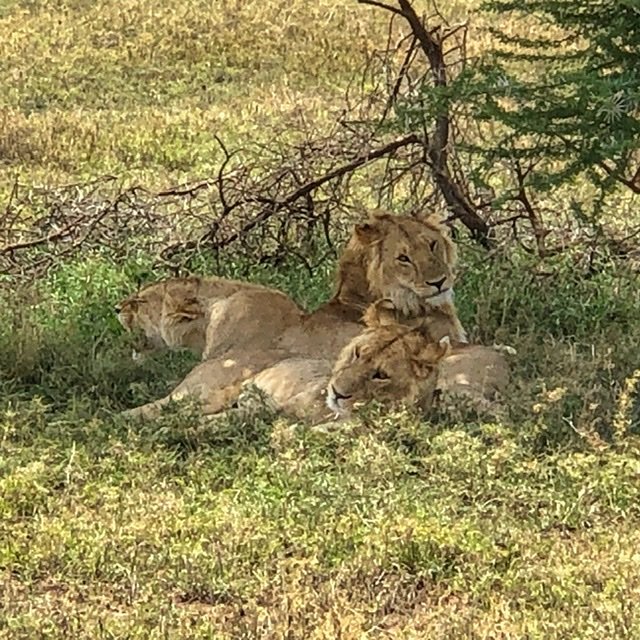
Another pocket of lions in Serengeti. It appeared to be a mother and her older cubs. The lioness on the left (most likely overprotective mom) was snarling at another young male who kept encroaching on their little shady pod. Perhaps an estranged stepchild?

The creeping stepchild.
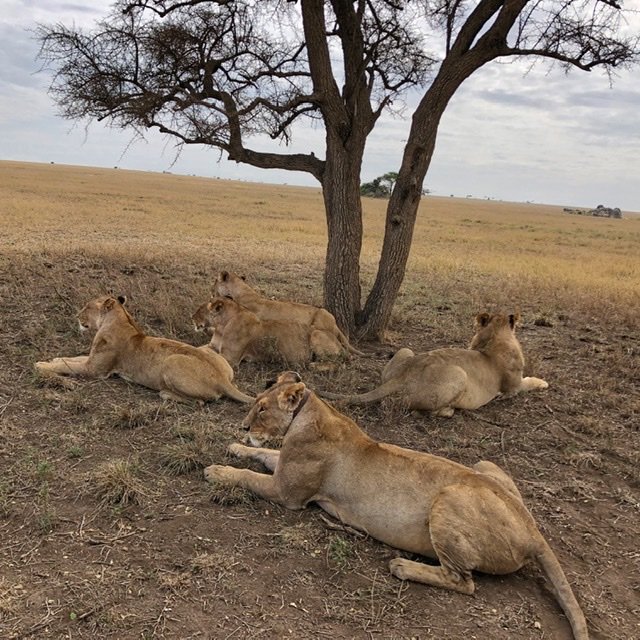
A pride of lions takes an afternoon snooze.
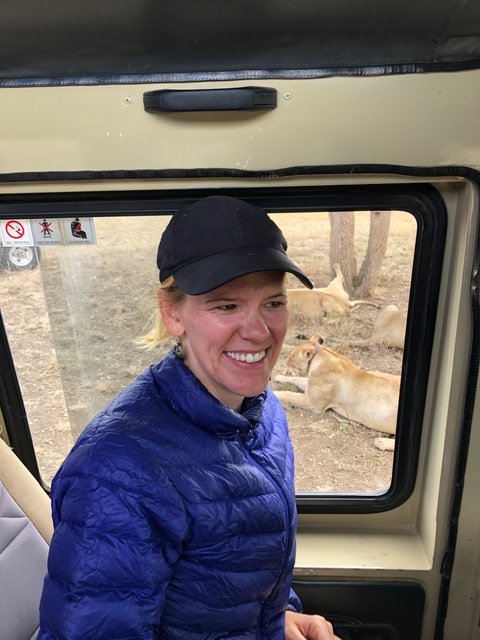
It was truly crazy how close we got.
Check out some of our favorite predator moments!

Ngorogoro Crater
The final day of our safari featured Ngorogoro Crater, which was aptly named after the sound the cowbells make when Masai herds graze across it. It’s also where we raced at lightening speed to catch a glimpse of the rare Black Rhino, to complete our Big Five bucket list which gleefully allowed our guide, Victor, to live up to his nickname, Mr. Big Five. We couldn’t have asked for a better experience.
Ngorogoro is one of the most famous volcanoes in the world, which peaked in size around 2.5 million years ago and today at the intact rim, is over 2100 meters (6800 feet) high. Its caldera is the biggest in the world—a basin of about 20 kilometers (12 miles) wide and is loaded with some of the highest wildlife density in all of Africa.
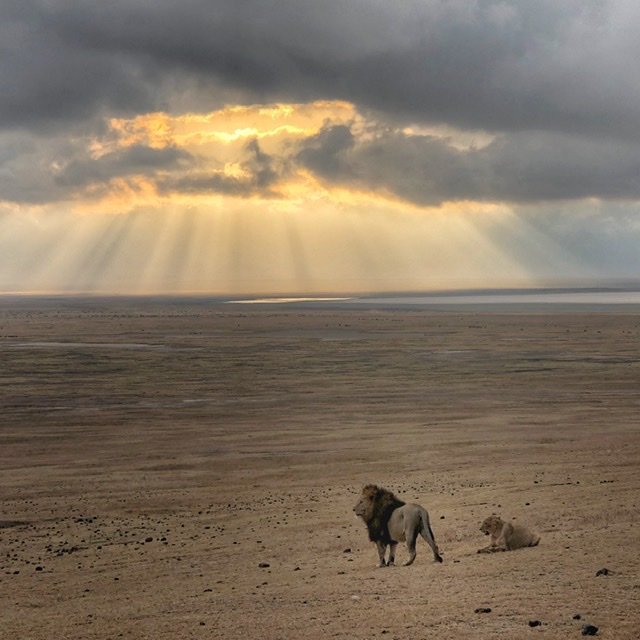
We saw these two lions shortly after sunrise upon descending the crater rim after a chilly night in our tent. The ostentatious male was leerily pursuing the female with good reason. Every time he tried to climb aboard he got a snapping growl to back the hell off.
Clearly she had a headache… For the record, a lion’s roar is 25 times louder than a lawnmower. Imagine that kind of rejection!
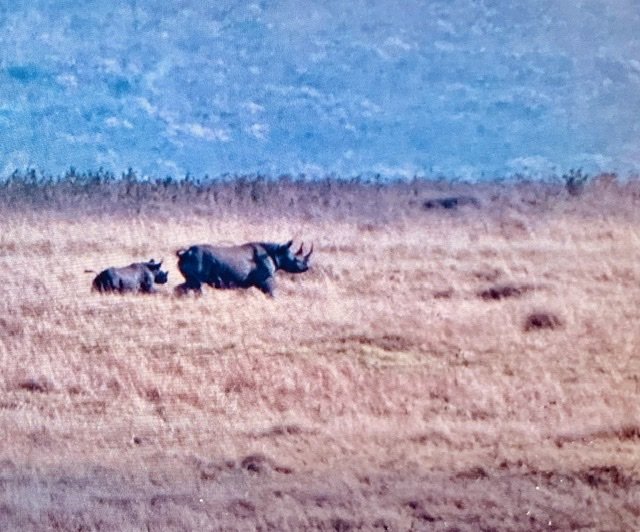
At practically the final hour, Victor stopped the car abruptly and was intently listening in on the radio, which is how the park rangers and other safari guides communicate. Out of nowhere he accelerated at full speed on the crater floor while yelling, “we’ve got a rhino!!!” Indeed, five minutes later we had zipped wildly within distant site of a rare black rhino and its baby. (There are only 50 in the park, and fortunately this is up from 30 in recent years). Thanks to our safari mate Roos and her telephoto lens for sharing this image, which could only be seen through binoculars.
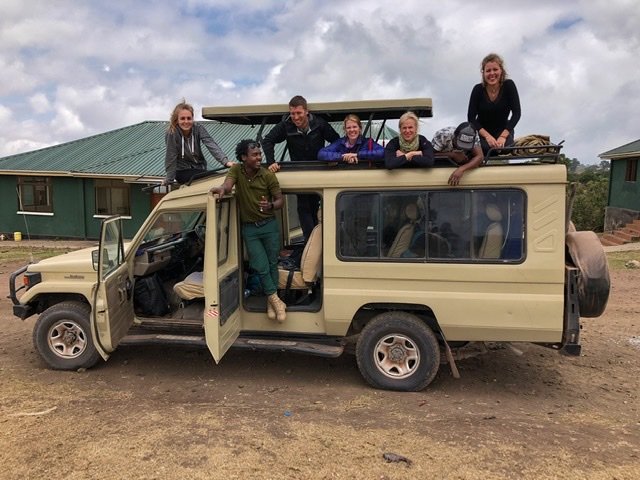
Wrapping up with a group photo. From left to right: Roos, Victor, Greg, Mandy, Karin, Mike (the chef), and Bess. Experience of a lifetime with incredible people!
Tanzania Wrap-Up
Time Spent: 17 days
Money Spent: $2384.98 ($926.63 or $66.18/day not including safari)
Budget Travel Meter*: $$$$ (not including safari)
The upsides of Tanzania
- It’s the perfect “starter” Africa country. Not too off-the-beaten path, plenty of tourists, and tourist infrastructure
- The friendly and welcoming people
- Nearly everyone speaks a little English
- The wildlife is unlike anything you’ll see on earth
- Access to terrific coffee and cheap, delicious produce
- Superb hospitality at Moshi Urban with Mama Alice. One of favorite AirBnB experiences
- The still relatively undeveloped beautiful beaches and water in Zanzibar
- Food can be inexpensive if you go to local places WITH MENUS (or they will rip you off) and there are plenty of Indian and vegetarian options.
- Gorgeous weather, which lasts much of the year
- Relatively easy to get around by bus
The downsides of Tanzania
- The visa cost, particularly for Americans is ridiculous. ($100/person). However, it is easy to attain the visa on arrival
- Dar es Salaam, the capital, is chaotic and difficult to orientate yourself.
- Using the Tanzanian Shilling is difficult because the highest bill is valued at around 4USD. This means you’re forced to use dollars for big ticket items, which gets expensive to convert.
- The mapapasis. This literally means “ticks” in Swahili. Also known as the street hawkers and hustlers who cling to you as you try to walk along selling tours, asking for money, taxis, etc.
- If you’re not a wary traveler, it’s easy to get ripped off left and right. We recommend having your accommodation call a taxi ahead when arriving to bus stations so the taxi driver can assist you
- In can be unnerving to walk around at night because there are often no street lights.
Would we go back? No, too many other African countries on our list, including neighboring Uganda, Rwanda and Zambia
Budget Travel Meter* The Budget Meter gauges how hard it was for us to stick to our $50/day budget. We’re factoring our Budget Meter by our daily food consumption options.
- $ – Eating-out up to twice a day and ordering whatever the hell we want, with dessert!
- $$—Eating-out once a day in a restaurant of our choice
- $$$—Eating-out once a day, on cheap pizza or local street food meals, usually involving copious amounts of filling bread
- $$$$—Eating-in every meal, healthy/fresh & in-season produce options
- $$$$$—Eating powdered soup & potatoes for every meal.


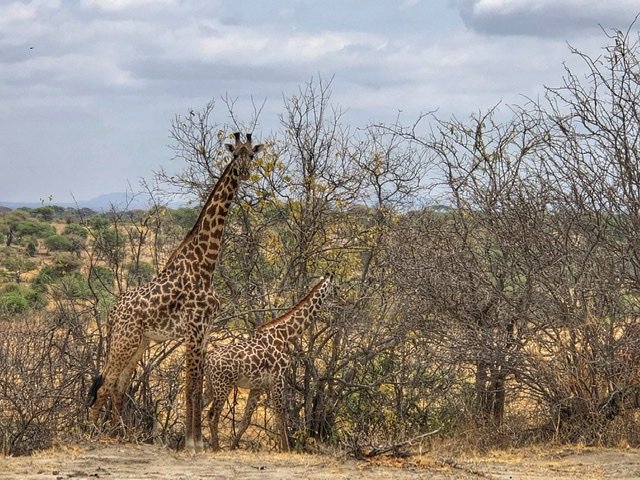
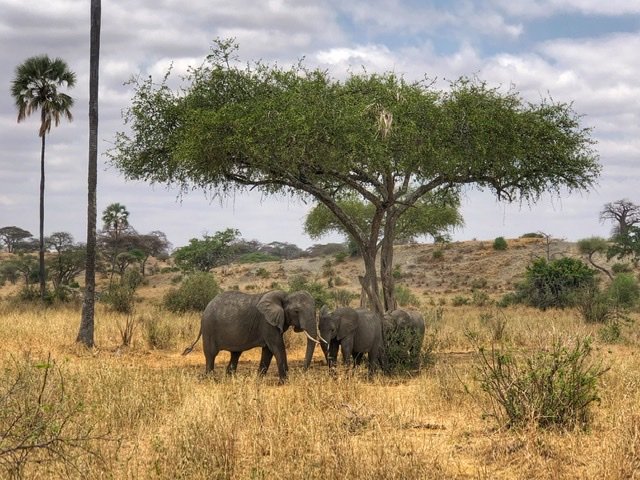
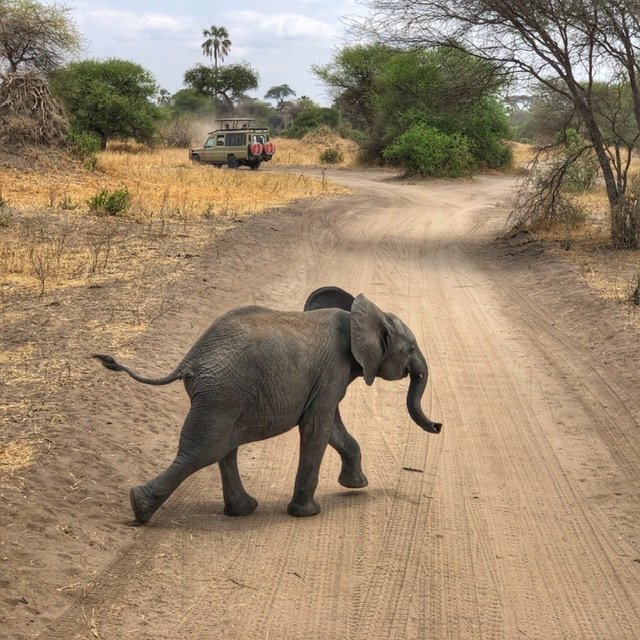
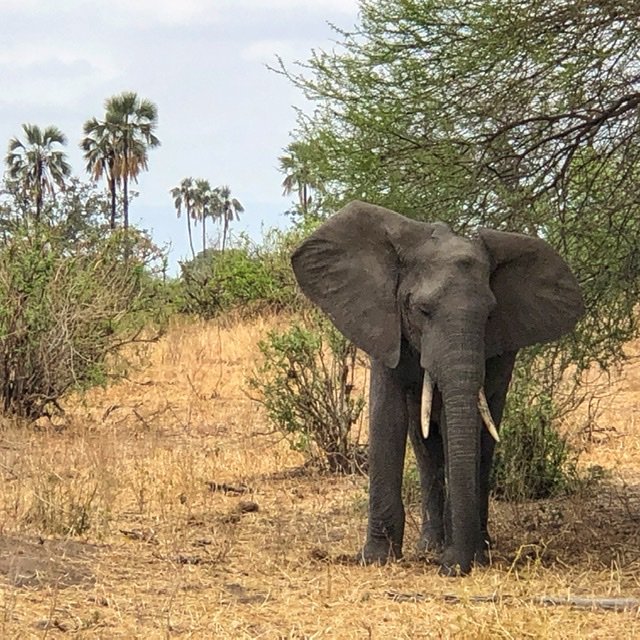
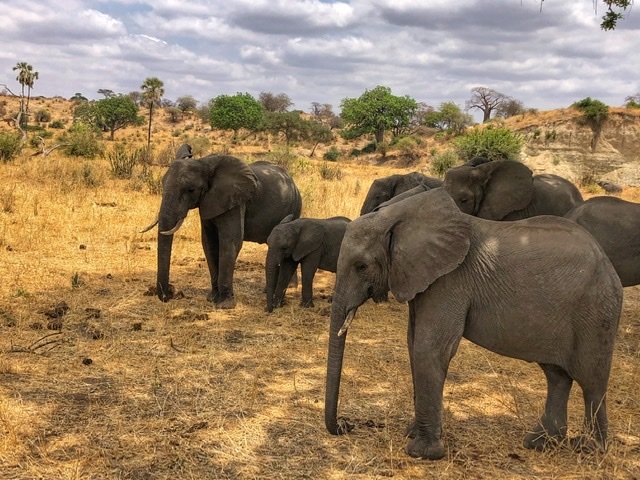


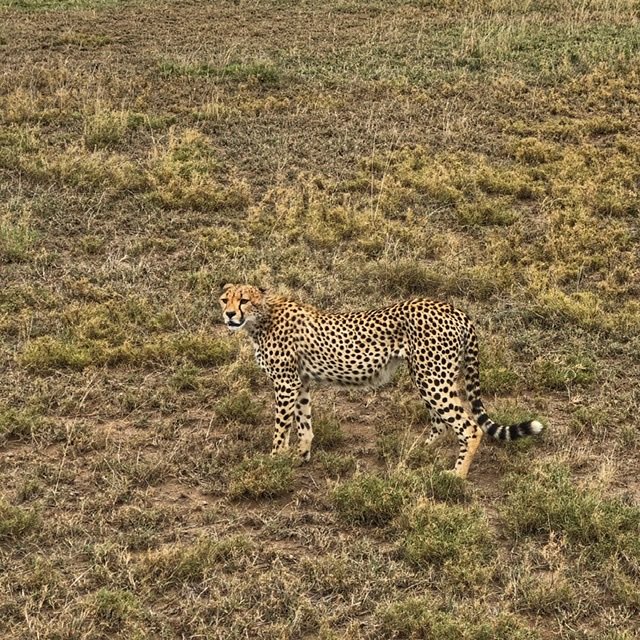
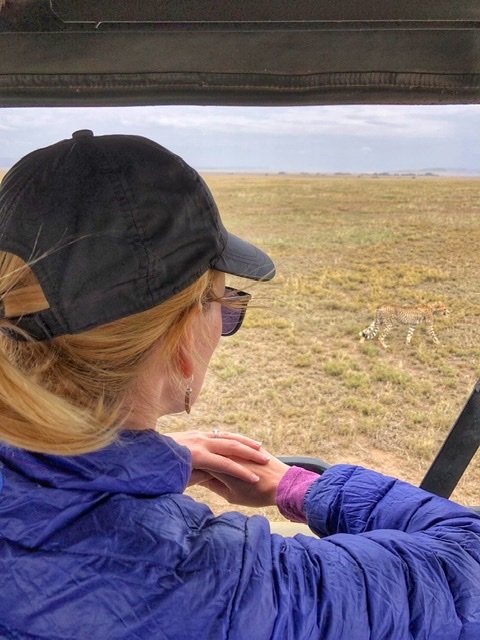

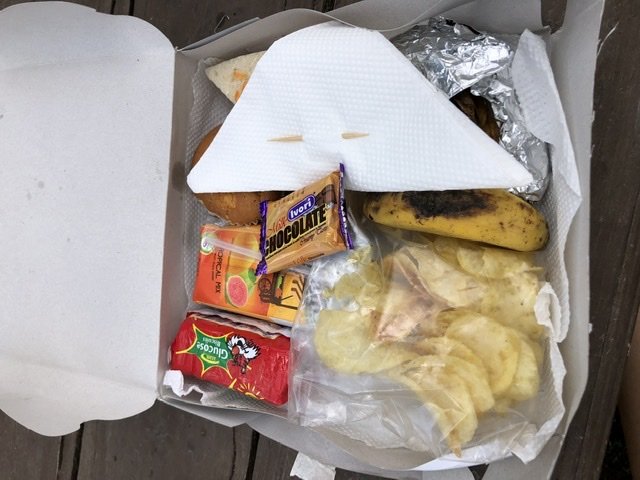

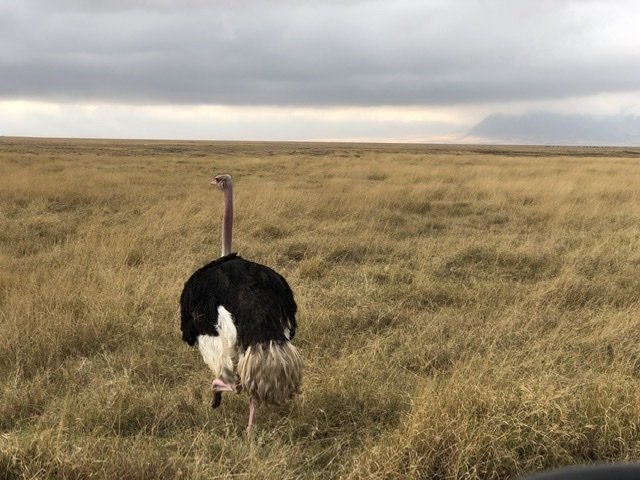

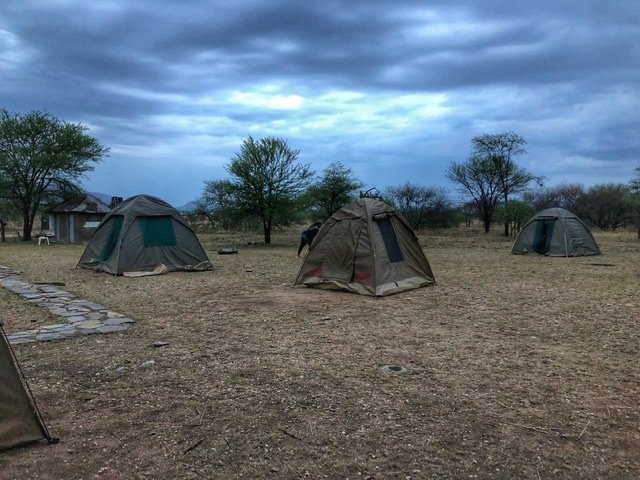
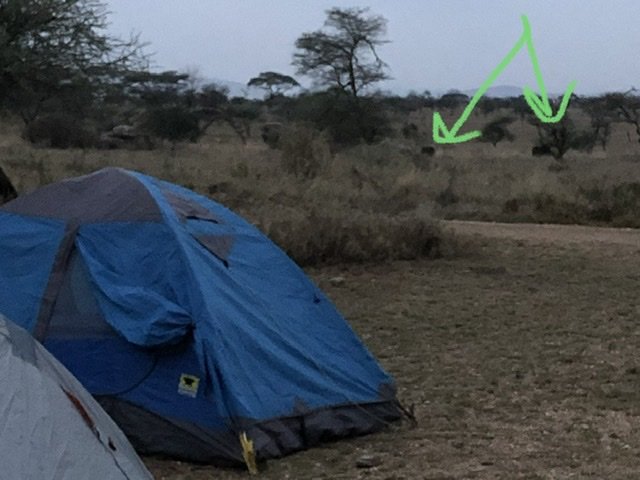
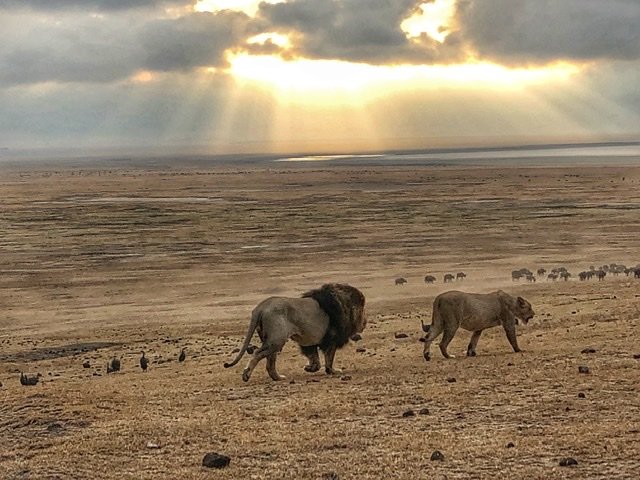
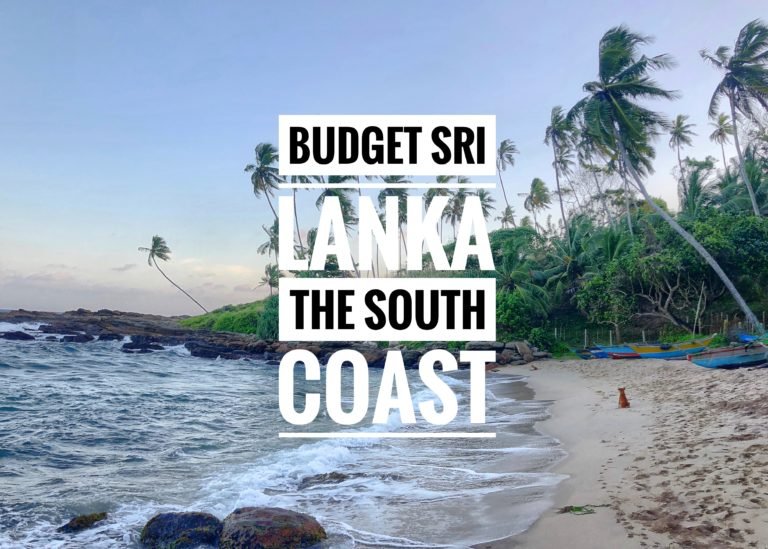


Loved reading your Safari adventures this morning, now off to do my travel job haha😂❤️ Ruba x
Aww, thanks so much Ruba. You’re such a great supporter! We really appreciate it and sure hope to meet you one day 🙂
Fantastic recap! We are definitely considering going on a Safari in the next few years and this was very helpful.:-)
Oh yay! You definitely have to. No doubt an experience of a lifetime!
Hi which tour did you do with https://www.golden-dream-safaris.com/safaris
We did the budget option…
Great blog, Thanks for sharing this amazing blog
thanks so much for checking it out and for your comment 🙂